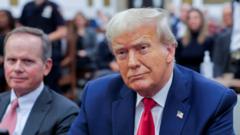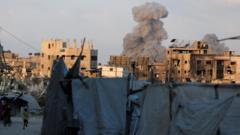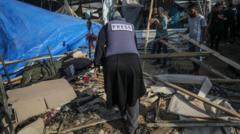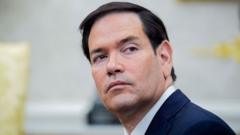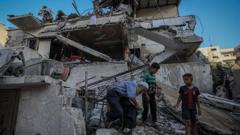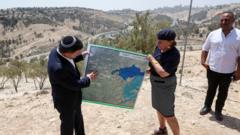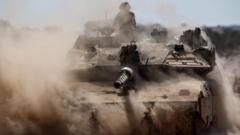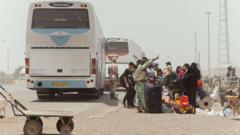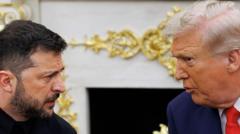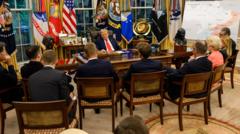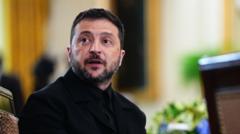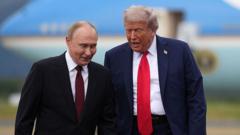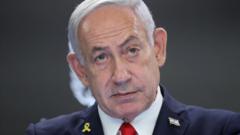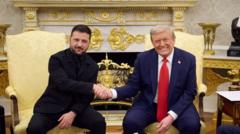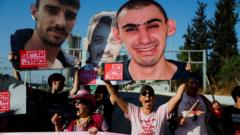Prime Minister Benjamin Netanyahu arrived in Washington to meet with President Trump for crucial talks, focusing on the ongoing conflict in Gaza and potential peace negotiations with Iran. Their previous cooperation saw unprecedented military actions, and many hope this meeting will lead to a new truce.
Meeting Between Netanyahu and Trump: A Bid for Peace Amidst Ongoing Conflict

Meeting Between Netanyahu and Trump: A Bid for Peace Amidst Ongoing Conflict
Prime Minister Netanyahu and President Trump’s discussions in Washington could change the course of the Gaza conflict and bring new negotiations with Iran.
Prime Minister Benjamin Netanyahu of Israel landed in Washington on Monday for critical discussions with President Trump. This meeting marks their first engagement since both leaders launched a series of significant military strikes against Iran, focusing largely on Tehran's nuclear ambitions and ballistic missile capabilities. President Trump is now leaning towards advocating for a cease-fire in Gaza, following the resolution of the recent conflict in Iran.
The backdrop of their talks is monumental, considering that just last month, Trump authorized the deployment of American stealth bombers to assist Israeli operations in Iran. This offensive met with retaliatory missile strikes targeting cities in Israel, intensifying the geopolitical stakes for both nations. In this meeting, Trump is seeking not only to foster a cease-fire in Gaza but also to explore the possibility of a new nuclear deal with Tehran.
What lies ahead is significant for many parties—both Israelis and Gazans are hopeful that these discussions might facilitate a ceasefire to end the protracted war that has lasted for 21 months. Previous negotiations have yielded some temporary truces; the most recent one saw Israel release over 1,500 Palestinian prisoners in exchange for around 30 hostages and the remains of several individuals.
As the two leaders convene, the eyes of the world are on them. The implications of their negotiations could reshape the future dynamics of the region, leading to new pathways for peace and stability, or alternatively, further entrenching the ongoing cycles of conflict and retribution.

